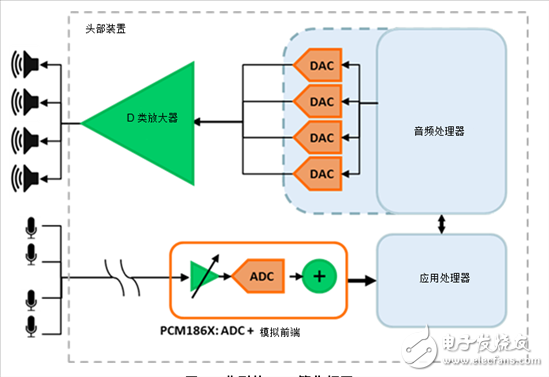In-cabin sound enhancement (CSE) system for comfortable car cockpit
As drivers spend more and more time on the car, manufacturers are working hard to make the car cockpit as comfortable as possible. More and more car buyers see noise as one of the decisive factors in buying a car.
Most car cockpit noise, such as road noise, wind noise and the interior of the card plaque, are unwilling to be heard by the driver – these noises can interfere with the driver, reduce the driver's mental processing capacity and can lead to distractions and stress. As a result, automakers sell their quietest cars at a premium.
I am sure you will encounter a situation where you must make a call through the hands-free system while driving. You want to make sure that the person answering the phone can clearly hear your voice, and you expect (hopefully?) the system to eliminate noise, such as air conditioning airflow, wind noise, and road noise inside the cabin. In this case, you need a car to perform noise discrimination.
Figure 1: Example of a hands-free system
Finally, there is a "noise" (intentionally quoted) that is actually heard from the bystander's eyes (or I should say the ear): engine noise. As engine technology progresses toward maximum fuel efficiency, automotive engine noise is significantly reduced. Automakers face the paradox of car buyers: drivers want all the torque and fuel efficiency of a newer, better engine, but also want to get the classic sound system of old-style cars with high fuel consumption. When designing an infotainment system, this is quite challenging and conflicting for manufacturers. They must distinguish and suppress some types of noise, but allow even other types of noise to be enhanced.
Audio technology for easy cabin comfort
Figure 1 shows a minimal block diagram of what I call the in-cabin sound enhancement (CSE) system.

Figure 2: Typical CSE simplified block diagram
In Figure 2, you will notice that the sound is captured by the microphone array; in this case, the array includes four analog electret condenser microphones. Although not shown in Figure 2, a typical electret condenser microphone approaches the current source when biased. An analog to digital converter (ADC) digitizes the audio signal from the microphone array and then processes the audio signal by an application processor.
In Figure 2, the integrated analog front end is integrated into the ADC to help improve signal-to-noise ratio (SNR) and achieve higher quality audio capture. Keep in mind that Figure 2 shows only one of the many ways to achieve this. For example, you can use a digital I2S microphone, but this alternative is more expensive than using an analog microphone and a multi-channel ADC.
The application processor enables specific functions of the CSE system based on the processed algorithm. To reduce unwanted noise, the processor performs an active noise reduction (ANC) algorithm.
The system is designed to reduce low frequency noise in the car's cockpit and operate at any stage of the car's operation, whether the audio system is on or off. The microphone array captures sound from the drive train and creates a precisely timed inverted audio signal that is then sent to the amplifier to drive the system speakers and subwoofer without affecting the music or call volume.
To enhance engine sound, the processor performs an engine sound enhancement (ESE) or sound actuator algorithm by playing a pre-recorded engine sound through a stereo system determined by engine load and RPM, or by having the microphone array capture sound signals from the transmission system. The processor amplifies and tunes this sound signal to make the driver not disgusted with the engine sound.
To efficiently implement a high performance hands-free system, the processor implements a microphone beamforming algorithm (MBF). Imagine the beam from the microphone to the driver's face. The system only "hears" the sound present in the beam and rejects sound from other directions. Each microphone in the microphone array is separated by a very specific distance specified by the system sampling frequency. This distance affects the time it takes for the sound to reach each particular microphone, providing the system with sufficient information about the direction and distance of the sound source and rejecting any sound outside of the virtual beam.
The highly processed output signal from the application processor is mixed in the audio processor with a user-specified audio signal source, such as music from an external source or a telephone conversation via Bluetooth. The mixed signal may include each signal from a user-selected source (in some cases ANC and ESE) without interfering with music or call levels.
The amplifier drives the system speakers and subwoofer in the cockpit.
Audio ADC Selection: Weighing Pros and Cons
As always, automotive system designers need to balance the trade-off between cost and performance.
Although the CSE system is easy to understand, it is a highly complex system that is difficult to implement in real life. Consider the performance difference between different noise canceling headphones; this is why good headphones cost hundreds of dollars.
The ideal audio ADC needs to:
Multiple channels for multiple microphones in a microphone array.
With excellent SNR ratio and dynamic range, it can clearly capture audio signals and effectively amplify or suppress signals according to the final application.
Not only is the sampling of all microphones accurately synchronized, but the high frequency signals in the converter itself are effectively synchronized.
Household Electrical Appliances
gree , https://www.greegroups.com
